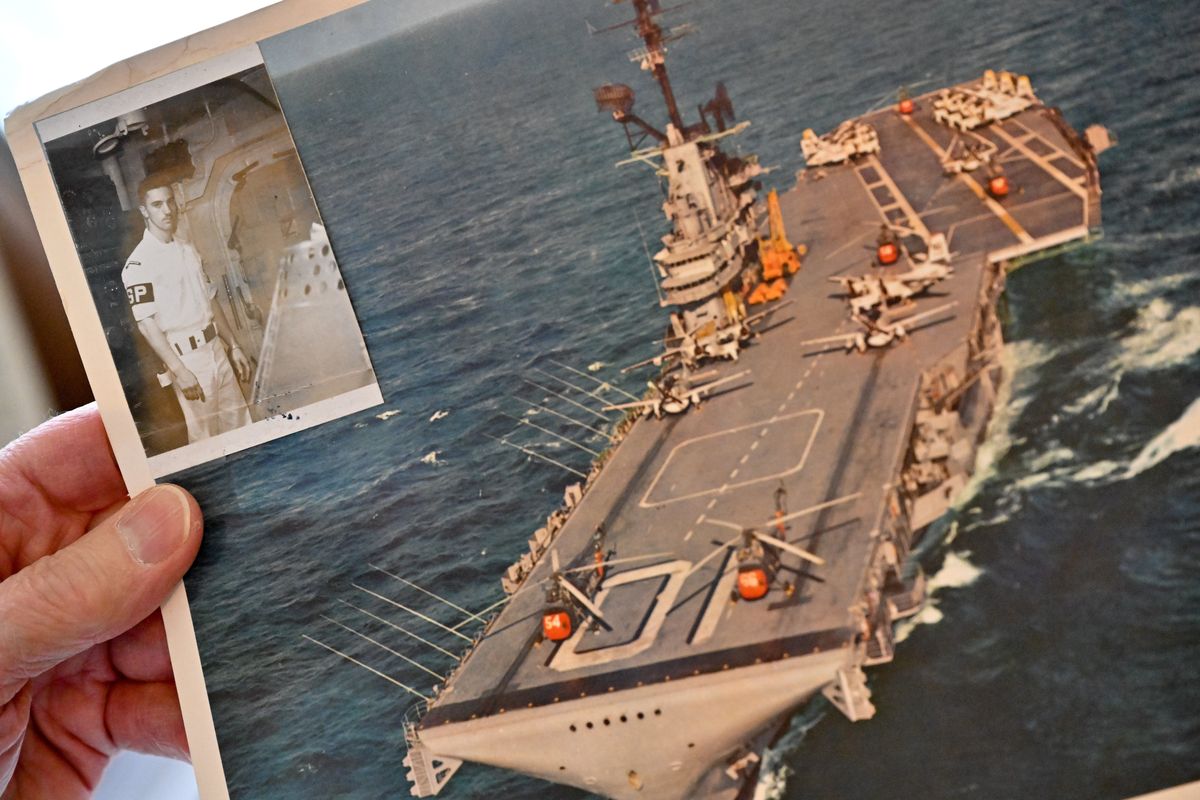‘It wasn’t a mirage, it was real’: Spokane atomic veteran recognized for service

Sixty-one years ago, Michael Driscoll and his fellow sailors aboard the USS Yorktown were told to hit the deck. They didn’t know why.
Driscoll learned 46 years later he was part of an atomic bomb test. Earlier this year, the 81-year-old Spokane resident was commemorated for it.
“This was 1962,” he said. “I didn’t find out what I had participated in until 2008.”
Driscoll received an Atomic Veterans Commemorative Service Medal and an Atomic Veterans Service Certificate in March for his involvement in two nuclear bomb tests in 1962 in the Pacific Ocean.
The U.S. Secretary of Defense established the medal in July to recognize veterans who, from 1945 to 1992, participated in the detonation of atomic weapons, cleaned up radioactive material from an “atmospheric detonation” or accident associated with an atomic weapon, or were exposed to ionizing radiation from atomic weapons during World War II.
Driscoll has a few health problems, including a thyroid condition diagnosed in the late 1990s, that could be from the explosions, but he has no way of knowing.
Driscoll was on the Yorktown for two tests in May 1962 when he was 20. Frigate Bird and Swordfish were part of Operation Dominic, a series of nuclear test explosions by the U.S. that year in the Pacific.
As part of Frigate Bird, a nuclear submarine fired a missile through the water, exploding thousands of feet into the air. The Yorktown was near the missile when it broke through the surface of the ocean but was more than 1,000 miles away when it detonated.
Swordfish happened five days later, on May 11, when the USS Agerholm fired an anti-submarine rocket at a floating smoking raft more than 4,300 yards away. The bomb, which was the size of the atomic bomb dropped on Hiroshima, Japan, at the end of World War II, detonated below the ocean’s surface, sending a massive spray dome into the air.
The explosion caused a wave of water to strike the Yorktown more than 5 miles away.
“I’m laying on the deck, and when the wave hits us, I literally was raised about 6 inches off the floor,” Driscoll said.
“I said to myself at that time, ‘I’m sure glad we’re not at war because if we were at war, I’d be feeling more of those,’ ” he added.
Driscoll said he believes nuclear radiation was in the water that struck the ship, potentially exposing him and others that day or the days following as they headed back to the southern California coast.
Driscoll documented the days leading up to and following the tests in a small, green notepad.
According to Driscoll’s notepad, those aboard the Yorktown had to turn in their cameras prior to the tests. He said they were told not to talk about the tests, of which they did not know the details, or they would go to jail.
The sailors were given radiation dosimeters to measure their radiation exposure during the tests. Driscoll said his device did not register any radiation.
Driscoll spent four years in the Navy in the early 1960s before joining the Peace Corps for two years in the early ’70s.
He said his time in the Peace Corps in Western Samoa could have also exposed him to radiation.
France conducted dozens of atmospheric nuclear tests from 1966 to 1996 and Driscoll wonders if some of that radiation floated from Polynesia to Western Samoa.
Meanwhile, in 2008, Driscoll said he stumbled into online information on the nuclear tests of which he was a part.
“I read it for about 15 minutes and I was actually shaking,” he said.
Driscoll said he realized if the tests had gone wrong, he likely wouldn’t have survived.
“I was scared to death,” he said.
There are 400,000 U.S. military and civilians listed as atomic veterans, according to Veterans Affairs.
Driscoll said some of them may not know they are atomic veterans because they were kept in the dark, like himself. He knows a couple of atomic veterans in the area.
He said he applied for the atomic veterans medal and certificate to see what they looked like and to confirm he was one. He encouraged others to apply.
“I was glad that they confirmed in writing, yes, I was there … No, it wasn’t a mirage. It was real,” Driscoll said.